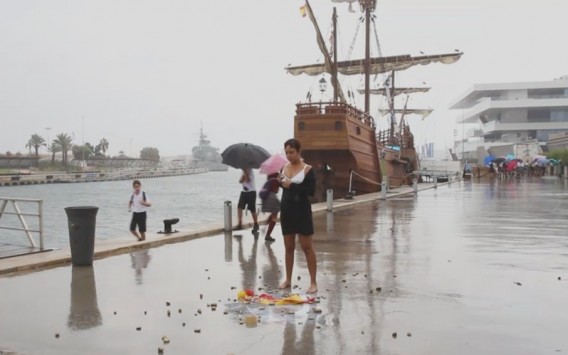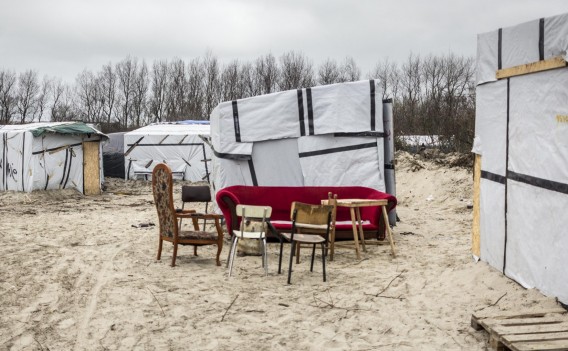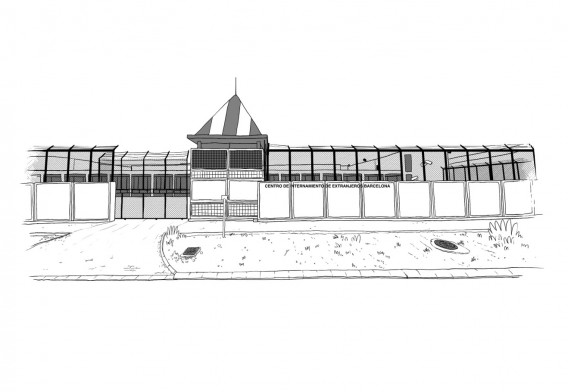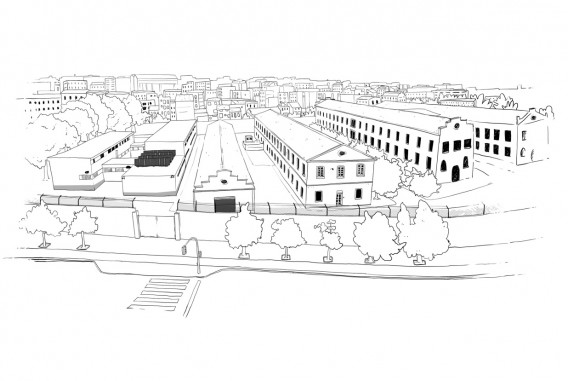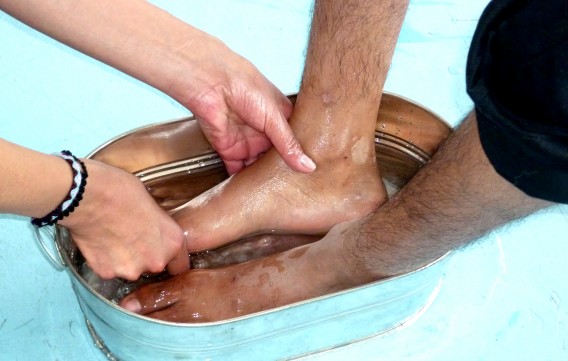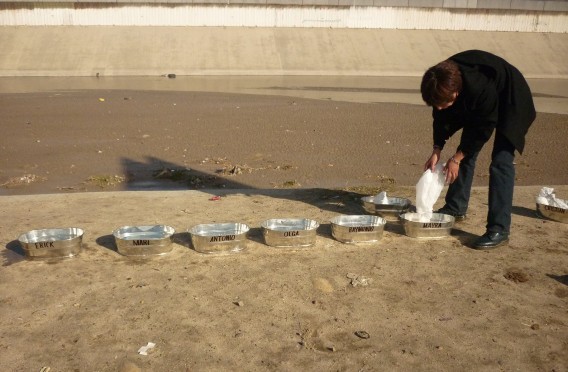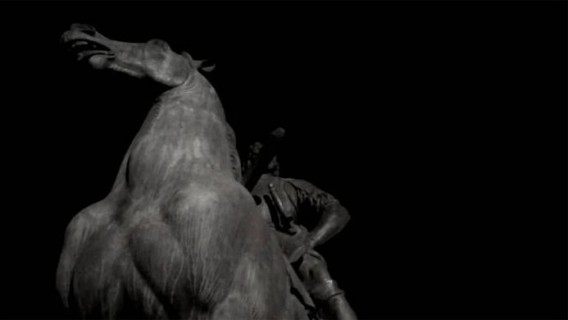For the last exhibition LABi 2019 we want to approach and generate reflection around the concepts of identities and borders, a very broad and very current topic. Starting from the idea of memory, which from the beginning is the guiding thread of our research work, we wanted to make visible some migrant problems and experiences, seeking to cover the subject from different points of view.
Currently, we are spectators of the media boom that is given to migration, a topic that we see addressed in news and debates, such as the wall that President Trump wanted to build between the United States and Mexico, as the tragic images of the boats where they travel people to Europe, crossing the ocean in precarious conditions, or videos with xenophobic attitudes of people who claim that migrants come to take their jobs. All are images with a strong sensationalist charge, and they exhibit the migratory phenomenon as a problem and a new or recent situation. But is it so new to migrate? What is the difference between current migrations with previous ones?
Let’s remember some Western history, go back in time and consider how Spain, Portugal, England, France and Holland, from the sixteenth century to the eighteenth colonized America, with human migrations that border the millions of people. There was also colonialism in Asia and Africa. We also take into account the extensive Spanish and Italian migration in the late nineteenth and early twentieth centuries that spread through Argentina, Uruguay, Mexico and Brazil mainly. And later, the migration occurred during the Franco regime, where Latin American countries like Chile received Spanish refugees.
What differentiates these migrations from the current ones? What makes that they have not been considered as such throughout history? We are speaking of enormous human figures that populated continents, not only the American, but also Asia, Africa and Oceania with the English, Dutch and French colonizations. And the numbers continue to rise and overflow.
What is it that produces tension, if it has been migrating for centuries? Could it be that those who migrate now come from countries that do not subscribe to the hegemonies of economic power? But the reasons of those who migrated centuries ago were also similar to the current ones. We refer to human lives that leave their homelands fleeing wars and/or dictatorships, famines, violence, going in search of new opportunities. But those migrants of yesteryear of European origin who traveled from north to south did not encounter closed borders or restrictions. So it seems to us that the key issue that causes the conflict is that displacement occurs from the global south to the north. These are migrants from developing countries, who have a past in common with colonization and who are mostly in the southern hemisphere. A space also of symbolic relations of power, opposed to the economic power of the north.
PARTICIPATING WORKS
Odette Fajardo
Feeding to Spain, 2018
Video-performance, 7.30 min
Camera: Patricia Cadavid and Luis Urquieta. Edition: Luis Urquieta
This piece is generated from the reflection on the coloniality and the personal experience of the author as a Mexican migrant in Spain, also influencing the feminine. Fajardo raises the implications of colonization as a symbolic and systematic violation of bodies and territories. It is from pain and experienced anger that structures its activity, as a way of denouncing a reality that is assumed, often also by the author herself. Thus, she discovers herself as an unconscious agent that feeds back a model that assails her, in a contradiction that, nevertheless, also reveals her own capacity to modify those discourses.

Anita Pouchard Serra
Latent urbanities, 2016-2017
Video, photography, drawing
Installation, cloth, impression
Photographic essay and drawing on the New Jungle of Calais, the settlement of migrants established spontaneously in the passage from France to England, between April 2015 and October 2016. The work arises from a meeting with one of the inhabitants of the field, which shows the difficulty to understand and know the complex reality of the field through the media. Thus, Pouchard seeks to show an unconventional story, away from the media image and stigmatization, revealing how this place was transformed, little by little, into a real city, self-built by refugees and volunteers. His images represent the intimacy and details of life, of encounters, through drawings, with which he seeks to leave a good part of the story to the imagination of the spectator. At the same time, the photographs relate the territory, the theater of these reconstructed lives.

Marina Álvarez-Dardet Colomer
[CIE Zapadores, València], 2019?
[CIE Zona franca, Barcelona]
[Women’s cell]
[Room with wc]
[Outside of a playground]
Drawing and digital painting from photos and sketches made for the short animation MAKUN (Emilio Martí, 2019)
MAKUN is an animation short film, made by Emilio Martí from the experience of having visited one of the Centers for Internment for Foreigners [CIE in spanish]. Through the video, Martí denounces the reality of the CIEs as prisons for the innocent and makes visible the miseries to which he submits, both in Spain and in the EU, to those who want to leave terrible situations behind. Likewise, the prohibition to obtain and publish images of these centers, closing access to the press, is evident as an effort to hide a systematized institutional cruelty, which directly points to the State as the main executor. The digital drawings and paintings presented here are a selection of those that reconstruct several CIEs and that are part of MAKUN.
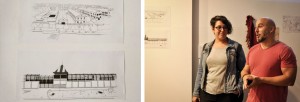
Fermín Jiménez Landa
In the bright darkness, 2017
Video
The island, as the archetype of escape, is a cultural cliché, beyond geography, in which desires are projected. A desire to escape fueled by the tourism market, in collusion with capitalism and the states, which shows a clear interest in the movement of a certain sector of humanity, the tourist, who leaves money, and for which it is increasingly accessible certain type of displacements. All this in times when borders are increasingly rigid for other sectors of the population. Thus, free movement, the ability to move freely around the world, is allowed only to those privileged who can do it for pure pleasure, who can afford it. In the same way, the desire itself seems also a privilege of those who can pay for it, while the desire for a better life is restricted to those who look for new places to have better opportunities.

Esmeralda Pérez Tamiz
Healing wounds, 2009
Photographs of performance record. Digital printing
Performance carried out during 15 days in the border city of Tijuana, Baja California, a key point of migration and deportation of migrants. Tamiz washed the feet of men, women and children deported from the United States, many of them without documentation. With this action, Tamiz highlights the psychological and emotional problems facing these people trying to achieve the American dream, or the frustration experienced by those who have managed to remain in an irregular situation for a while and is deported, to a border that does not belong either.

Anja Krakowski
Statesmen
Single-channel video Duration 12 min
Single-channel video projection on a reflective surface
Installation. Mixed technique
Statesmen conforms an assembly fragment extracted from the installation RIGHT HERE, RIGHT NOW, RIGHT THERE, RIGHT THEN? the dog of three fifteen
Concepts and ideas are travelers and yet the current ideology tries to fix them. Frozen, in form and under artistic pretext, they rise to glorify an event, a historical moment or a precise power.
Under changing perspectives (of history, context or positioning) statues become anachronisms of collective identities, revealing inequalities, asynchronies and impacts (such as wars and migratory displacements)
Statesmen is part of an essay-fiction that explores the complicated relationship that memories, collective identities and foundational myths hold with their signs of fixation, in an era characterized by apparent immediacy and its emphasis on the eternal here and now.
Through the accumulation of images, objects and layers of information, a narrative is generated that insists on its own contradictory nature, trapped between Borges’ hypermnesia and Orwell’s imperative forgetfulness.

Transiting frontiers is a project of the LABi team, a group of students of the Master in Photography, Art and Technique of the Polytechnic University of Valencia, in collaboration with La Posta Foundation – Image Research Center.


